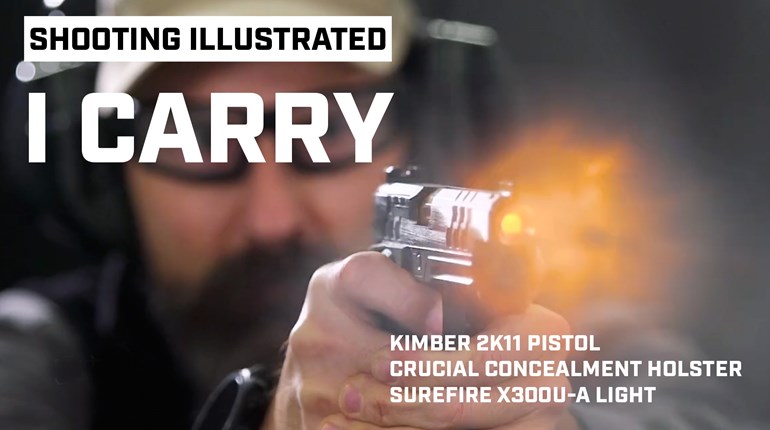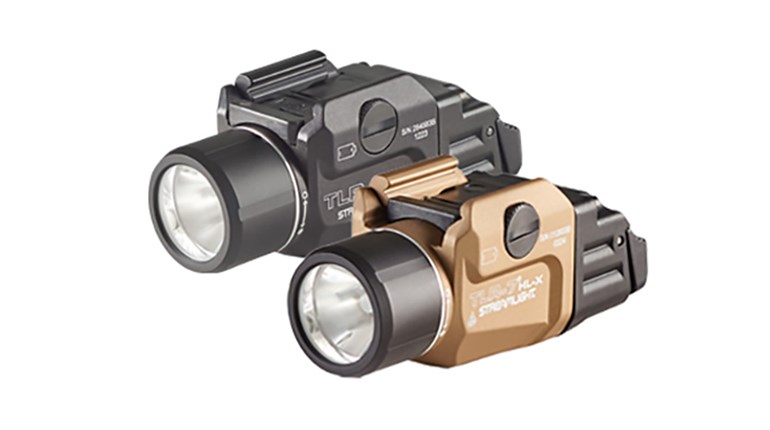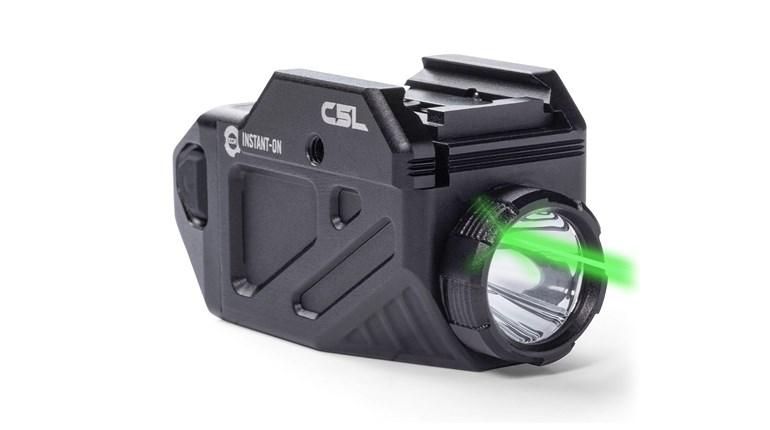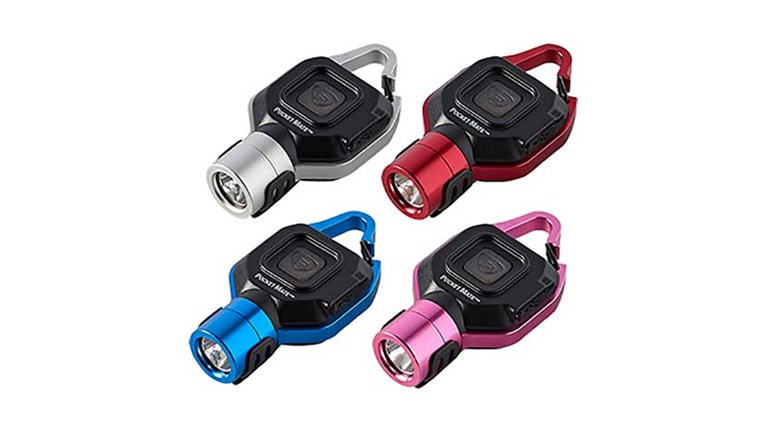

Way back when CB radio and "Wolfman" Jack ruled the air waves, law enforcement and outdoorsmen relied on huge D-cell flashlights that weighed more than a hammer and were long enough to drive nails. It was 1973, an opportune year for Streamlight to open its doors, because the gear routinely carried by those whose "beat" includes hours of darkness was about to radically change.
Battery performance improved exponentially. Rechargeable versions were introduced. Polymer became so acceptable as a housing material, you rarely hear the word "plastic" anymore, and incandescent bulbs took a back seat to long-lasting and power-efficient LEDs. While many other companies struggled with the evolution, Streamlight thrived.
The company's secret, the ability to subtly incorporate new technology, shows in its new TLR-2G. At first glance, it looks nearly identical to one of Streamlight's more popular weaponlight offerings, the TLR-2, which has a red laser sight. In fact, its length (3.39 inches including paddles), width (1.47 inch) and height (1.83 inches) dimensions are identical. The TLR-2G, however, weighs 4.58 ounces with battery on board, .14 ounces less than its predecessor.
The identical size means you won't need a new holster or a different secure-storage setup if you upgrade to the TLR-2G. There's also no need to develop new muscle memory, since the controls are identical.
Activate the unit, and you'll discover the most significant difference: The laser is green instead of red. Volumes have been written on the advantages of green, but in simplest terms it boils down to the predator/prey relationship—colors that surrounded us before our habitat became drywall and steel and evolutionary leftovers in our eyes.

You still find the rounded "V" shape on the bottom of the weaponlight—where the red laser was housed and emitted from its predecessor. On the new eversion, however, the green laser radiates from a small cavity inside the light's reflector, so the hole once used for the red laser to escape from the bottom of the body is no longer there. That's one less place to leak. Situated behind the lens' high-impact glass, the laser also has slightly more protection now from the elements. The green laser is also closer to the bore, making parallax less of a concern.
The changes may seem subtle—with the exception of the green laser—but are significant for those who are serious about their personal-defense handgun wearing a weaponlight and laser. A single CR123 battery powers the unit instead of two, another change. Green lasers drink energy, so this modification seems a little odd, but you can expect 1.25 hours of run time with both the laser and light running. For comparison, the TRL-2 (two CR123s) will operate for 2.5 hours. Instead of modifying the battery compartment, Streamlight simply installed an internal connection that, at first, looks like a battery permanently in place. Don't try to pry the "jumper" out of the weaponlight.

Both the laser and light powered on instantly and non-reluctantly after several hours in the freezer—despite a listed operating temperature of 32 to 104 degrees Fahrenheit. It mounted quickly and effortlessly on a Springfield XD chambered in 9 mm (and it comes with a five-key kit for attachment to a variety of handgun rails). After windage and elevation adjustment with the provided Allen wrench, it held zero perfectly through an extended range session.
White-light output is 200 lumens. A small and protected switch at the back (and bottom) of the weaponlight allows you to select laser, laser and light or only light. An ambidextrous rocker switch activates the weaponlight with constant or momentary positions (up or down). Placed on the XD, it was hard for a trigger finger not to intuitively find the paddles, and they're large enough to be located during gloved operation. All it takes to launch the strobe mode is a couple of quick taps on the paddles.
Constructed of 6000-series machined aircraft-grade aluminum, the TLR-2G is tough enough to take a beating, and Streamlight stands behind it with its limited-lifetime warrantee. MSRP is $550, but unlike that CB you bought back in the '70s, this one can really punch through a signal—one a bad guy will understand.





































